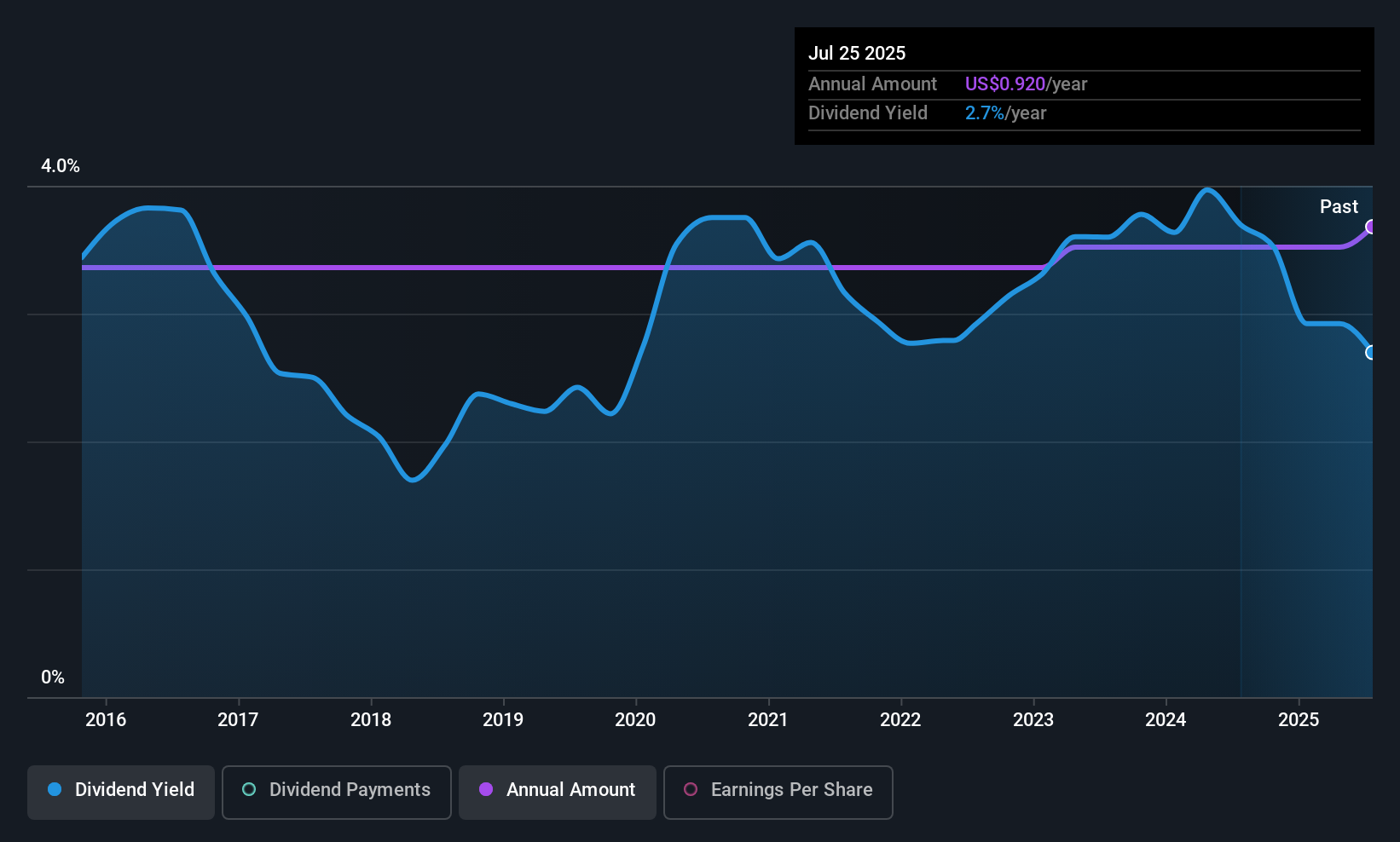- United States
- /
- Banks
- /
- NasdaqGM:OVBC
There's A Lot To Like About Ohio Valley Banc's (NASDAQ:OVBC) Upcoming US$0.23 Dividend
It looks like Ohio Valley Banc Corp. (NASDAQ:OVBC) is about to go ex-dividend in the next two days. The ex-dividend date is one business day before a company's record date, which is the date on which the company determines which shareholders are entitled to receive a dividend. The ex-dividend date is of consequence because whenever a stock is bought or sold, the trade takes at least one business day to settle. Therefore, if you purchase Ohio Valley Banc's shares on or after the 31st of October, you won't be eligible to receive the dividend, when it is paid on the 10th of November.
The company's next dividend payment will be US$0.23 per share, and in the last 12 months, the company paid a total of US$0.92 per share. Based on the last year's worth of payments, Ohio Valley Banc has a trailing yield of 2.7% on the current stock price of US$34.66. We love seeing companies pay a dividend, but it's also important to be sure that laying the golden eggs isn't going to kill our golden goose! As a result, readers should always check whether Ohio Valley Banc has been able to grow its dividends, or if the dividend might be cut.
If a company pays out more in dividends than it earned, then the dividend might become unsustainable - hardly an ideal situation. Fortunately Ohio Valley Banc's payout ratio is modest, at just 30% of profit.
Generally speaking, the lower a company's payout ratios, the more resilient its dividend usually is.
Check out our latest analysis for Ohio Valley Banc
Click here to see how much of its profit Ohio Valley Banc paid out over the last 12 months.

Have Earnings And Dividends Been Growing?
Businesses with strong growth prospects usually make the best dividend payers, because it's easier to grow dividends when earnings per share are improving. If earnings fall far enough, the company could be forced to cut its dividend. This is why it's a relief to see Ohio Valley Banc earnings per share are up 7.2% per annum over the last five years.
The main way most investors will assess a company's dividend prospects is by checking the historical rate of dividend growth. In the last 10 years, Ohio Valley Banc has lifted its dividend by approximately 0.9% a year on average.
To Sum It Up
Is Ohio Valley Banc an attractive dividend stock, or better left on the shelf? It has been growing its earnings per share somewhat in recent years, although it reinvests more than half its earnings in the business, which could suggest there are some growth projects that have not yet reached fruition. In summary, Ohio Valley Banc appears to have some promise as a dividend stock, and we'd suggest taking a closer look at it.
Want to learn more about Ohio Valley Banc's dividend performance? Check out this visualisation of its historical revenue and earnings growth.
A common investing mistake is buying the first interesting stock you see. Here you can find a full list of high-yield dividend stocks.
New: AI Stock Screener & Alerts
Our new AI Stock Screener scans the market every day to uncover opportunities.
• Dividend Powerhouses (3%+ Yield)
• Undervalued Small Caps with Insider Buying
• High growth Tech and AI Companies
Or build your own from over 50 metrics.
Have feedback on this article? Concerned about the content? Get in touch with us directly. Alternatively, email editorial-team (at) simplywallst.com.
This article by Simply Wall St is general in nature. We provide commentary based on historical data and analyst forecasts only using an unbiased methodology and our articles are not intended to be financial advice. It does not constitute a recommendation to buy or sell any stock, and does not take account of your objectives, or your financial situation. We aim to bring you long-term focused analysis driven by fundamental data. Note that our analysis may not factor in the latest price-sensitive company announcements or qualitative material. Simply Wall St has no position in any stocks mentioned.
About NasdaqGM:OVBC
Ohio Valley Banc
Operates as the bank holding company for The Ohio Valley Bank Company that provides commercial and consumer banking products and services.
Flawless balance sheet with solid track record and pays a dividend.
Similar Companies
Market Insights
Community Narratives



